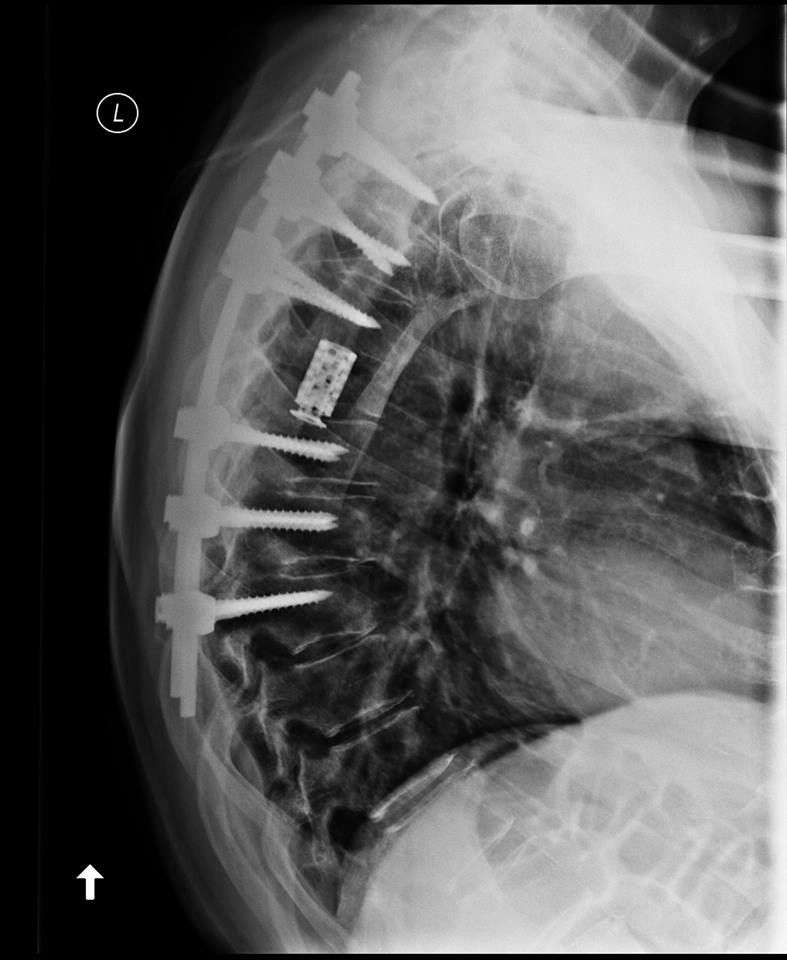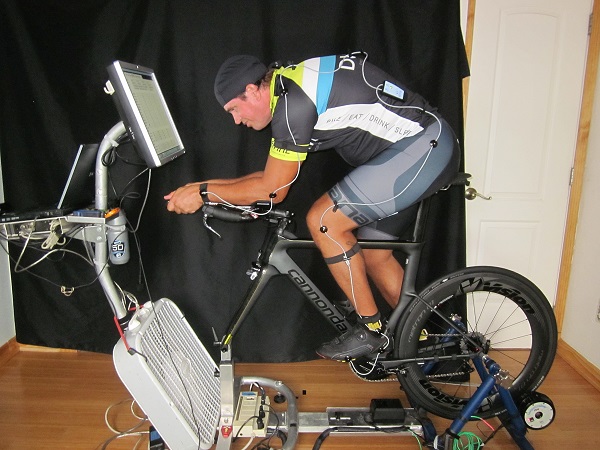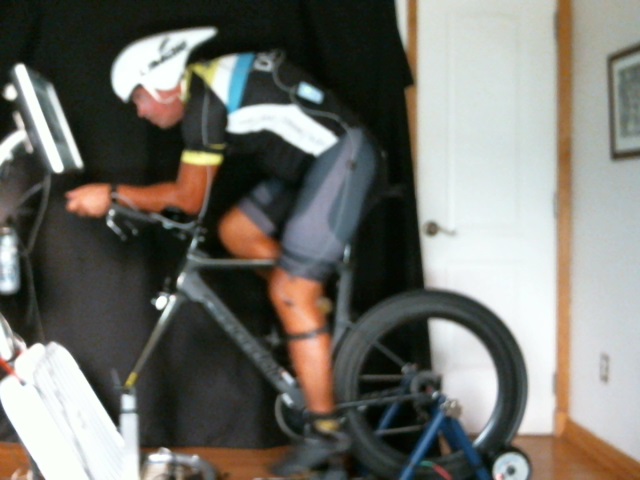
RIDING AFTER
INJURY. CAN A BIKE FIT IMPROVE YOU BECAUSE OF A LIMITATION?
You don't need to be defined by an injury.
Sometimes, an injury can be used as a jumping point to make your
fit even better.
 |
Chapter 6 in the Injury/Recovery Series |
It's rare when an injury sustained on or off the bike does not
impact a cyclist in one way or another. Most often, riders are
affected in varying degrees of severity, from a simple nagging
pain to a more severe trauma that may even force one off the
bike.
| In James Miller case, the injury was a severe spine injury that
required fusing a number of vertebrae in his upper back.
The life-saving operation created a permanent curvature
in his upper back, near and below the scapulae.
This structural intervention has
permanently changed his posture and affected James not
only on the bike, but also in other aspects of his life.
"The pain is there, always.
It's manageable. Some days I can tolerate it better than
others, but I refuse to let it affect my riding." |
 |
 |
We worked with James before and helped him
return safely and effectively to road cycling.
"I
sought bike fitting from A Perfect Bike Fit to help me come back
to my bicycle. I wanted to be able to ride in the most comfort
given my situation. I also wanted to go back to my old form and keep up with the fast guys
without tearing myself apart."
Here is the case study we posted at the time on how we resolved
his situation.
The challenge was to achieve a
biomechanically neutral position while protecting the back. That
was a tall order: we had to embrace the fixed curvature in his
back without letting it affect other aspects of his relationship
with the bike.
Maintaining biomechanical neutrality in key
body segments was important to protect him from the potential of
repetitive use injuries that may arise from compensation due to
the spinal curvature. A Fit For Injuries protocol was followed
in order to achieve this delicate balance. |
We were successful and James has been racking
up the miles, regaining his fitness and speed.
Two years later, he has come back to us with a
new challenge: a Time Trial bike.
But this time, the situation is different.
What if we could turn the spinal curvature into an asset? What
if we could actually make it the jumping point for achieving a
superior aerodynamic position?


The hip angle is measured while in motion by the Retül
3D motion system (the wires and round black sensors on
the body). Here we see a visual representation: the
angle between the two yellow lines is the hip angle in
the "open" position. The fixed spinal curvature
is also highlighted in red. |
That's exactly what we did. Thanks to our
background in engineering and aerodynamics, we hatched a plan to
use the fixed spinal curvature as the strong point of the bike
fit.
Of course, all the other ingredients of the
Time Trial bike fit protocol (which is different from Triathlon)
and Fit For Injuries where part of the mix. But now, we had
a strength to work with as compared to a limitation - and the
sky was the only limit in James' Time Trial bike fit.
Knowing a few secrets of the true behavior of
the aerodynamics of a Time Trial cyclist and the key to the
correct spinal alignment to achieve the maximum aerodynamic
benefit and biomechanical alignment, we set out to give James
the best power to aero ratio.
A key component was the hip angle.
The hip angle is directly related to power output and also to
the pressure on critical muscle groups, such as the upper
gluteus, the hip flexors and the all-important ilio-psoas and
psoas (AKA the back muscles). These muscle groups can put
tremendous pressure on the upper back when the hip angle is too
closed.
The catch is that the hip angle becomes more
and more closed as the body is rotated into a more aggressive
aero tuck. The power also drops exponentially as the hip angle
becomes smaller.
We worked with Jimmie in finding the ideal
compromise point, at which aero is maximized in balance with
power generation and muscular back-pressure transfer - while
protecting the spinal curve imposed by the fusing of the
vertebrae.
|
| Here we see the final position we
achieved for James while doing the aero integration
testing with a Limar TT helmet.
We employed many of our tricks of the
Aero fit trade: specific muscle group engagement and
optimization, weight load shift to osteo groups and aerodynamic
maximization.
All the while, we protected the
back - making its curvature the strong point of the
aerodynamics of this bike fit. |
 |
Admittedly, this is a rather unusual
situation. It's not every day that we encounter situations so
severe. Luck had it that we could turn it into as asset for
James, something
good.
For some riders, injuries are going to be the limiting
factor with which we have to work. But the goal remains the
same: make you the best you with what you've got.
And for that, we are happy we can be here for
all our customers.
OUR BELIEF:
"You don't have to be a Pro to get a bike fit. Everyone who
climbs into a bike deserves to have a great experience,
regardless of their fitness, expertise or equipment level."
A Perfect Bike Fit Pro Studio
Love your ride. Get a bike fit.